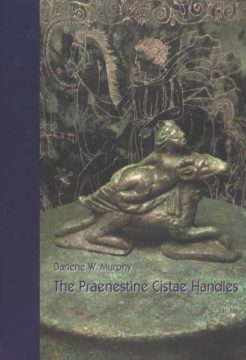The Praenestine cistae have long been a topic of discussion in the archaeological world. The first cista was discovered by chance in 1738 or 1743. This cista, the Cista Ficoroni is also the best known. After this initial spectacular find, there were no more discoveries in Palestrina until the excavations lasting from the middle of the 19th to the beginning of the 20th century. This book covers the part of the cistae that has been left out of, or only marginally discussed in these and other publications, the cistae handles. The handles are statuettes or statuette groups of solid cast bronze. They consist of one to three figures and can be divided according the pictorial themes. Using the way the cistae feet were composed as a determining factor Jurgeit was able to establish two active workshops in Praeneste that produced the feet. Is there a similar factor that would allow the handles to be assigned to workshops? To answer this question the handles were examined to determine both common denominators and details that can be used to divide them into groups.
- Veröffentlicht am Sonntag 6. Mai 2001 von J.H.Röll Verlag
- ISBN: 9783897541726
- 234 Seiten
- Genre: Antike, Geschichte, Sachbücher, Vor- und Frühgeschichte
